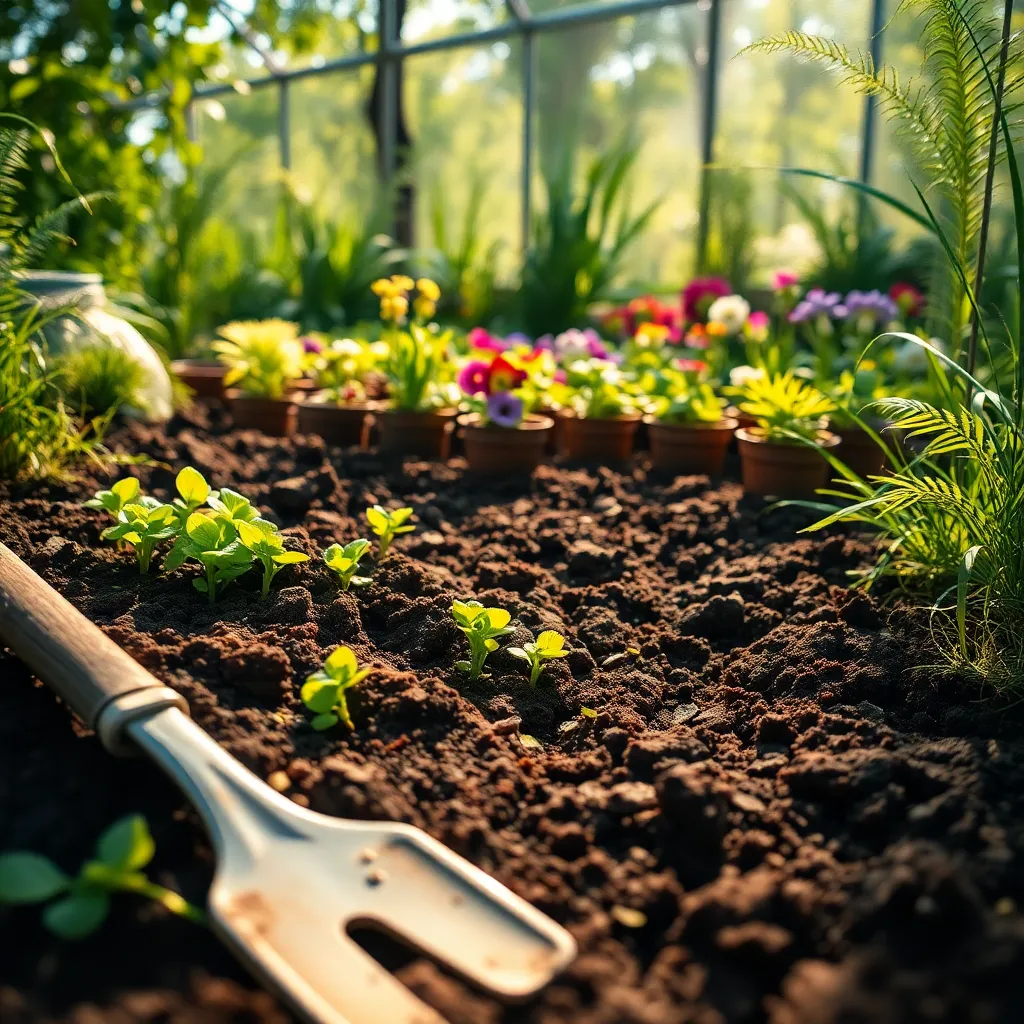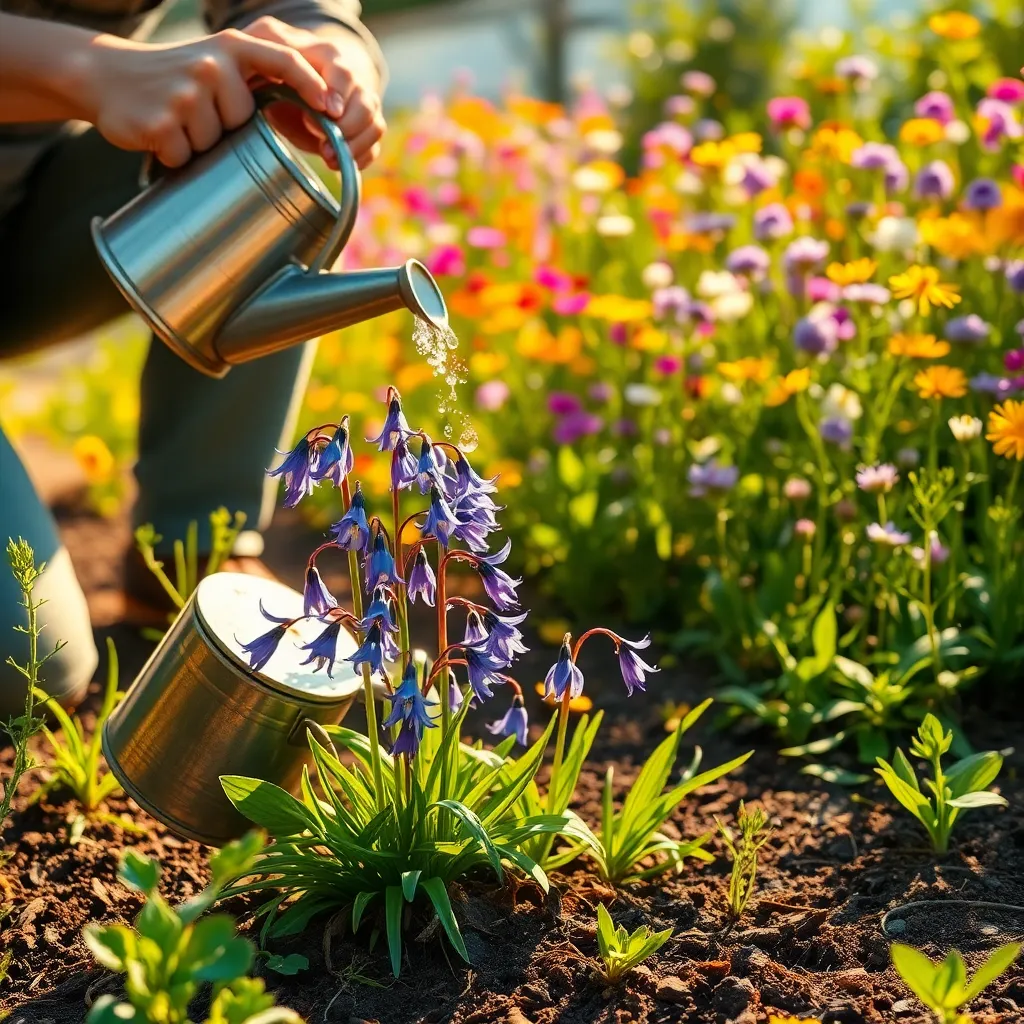Imagine stepping into your garden and being greeted by a vibrant tapestry of colors, where delicate petals sway gently in the breeze. Wildflowers not only bring an unruly beauty to your space but also invite a host of pollinators like bees, butterflies, and hummingbirds, creating a thriving ecosystem right outside your door. Whether you’re embarking on your first gardening adventure or you’re a seasoned green thumb, growing wildflowers offers a unique blend of simplicity and reward that few other plants can match. These resilient beauties require minimal care and adapt well to various environments, making them perfect partners for gardeners of all skill levels.
In this article, we’ll explore the magic of transforming a patch of earth into a sanctuary of wildflowers, guiding you from seed selection to the first bloom. You’ll learn how to prepare your soil, choose the right mix of seeds for your climate, and nurture your flowers to full splendor. For novices, we’ll demystify the process with step-by-step instructions that ensure success in your wildflower endeavor. For more experienced gardeners, we’ll delve into advanced planting techniques and tips to enhance biodiversity in your garden. Whether your goal is to cultivate a small corner or transform an entire yard, this guide will empower you to create a wildflower haven that speaks to your soul and benefits the planet.
Select Suitable Wildflower Seeds

Choosing the right wildflower seeds is crucial for a thriving garden. Start by considering your local climate and soil conditions to ensure the seeds you select will flourish.
It’s important to select a mix of annual and perennial seeds for continuous blooms throughout the growing season. Annuals provide vibrant colors in the first year, while perennials establish themselves for future growth.
For beginners, opt for a pre-packaged wildflower seed mix that is suitable for your region. These mixes often contain a balance of species that are easy to maintain and provide a variety of colors and heights.
Advanced gardeners might experiment with individual species, allowing for more control over the garden’s appearance. When doing so, research each plant’s specific needs, such as sunlight requirements and soil preferences, to achieve the best results.
Pay attention to the planting time recommended for your chosen seeds, typically in early spring or late fall. This timing ensures the seeds have the optimal conditions to germinate and grow successfully in your garden.
Prepare the Planting Area

Before planting your wildflower seeds, it’s essential to clear the area of weeds and debris. Removing these obstacles ensures that your wildflowers have the best chance to thrive without competition for nutrients and sunlight.
Next, consider the soil type and condition in your garden. Wildflowers generally prefer well-drained soil, so you may need to amend clay-heavy areas with sand or organic matter to improve drainage.
Testing the soil’s pH can help you understand whether it falls within the ideal range for most wildflowers, which is between 6.0 and 7.0. If necessary, adjust the pH by adding lime to increase alkalinity or sulfur to increase acidity.
After preparing the ground, lightly till the top layer of soil to a depth of about 2 to 3 inches. This step aerates the soil, making it easier for the roots of your wildflowers to establish and absorb nutrients effectively.
For best results, level the soil with a rake to create a smooth surface. This ensures even seed distribution and optimal germination rates when you sow your wildflower seeds.
Sow Seeds Evenly

To ensure a beautiful wildflower display, it’s crucial to sow seeds evenly across your prepared planting area. Achieving even distribution prevents overcrowding and ensures that each plant has sufficient space and resources to flourish.
Start by mixing your wildflower seeds with sand or a light carrier to make spreading easier and more uniform. This technique helps to visually gauge the distribution and avoid clumps of seeds in one spot.
When sowing, use a gentle hand to scatter the seed mixture across the soil surface, aiming for an even spread. For smaller areas, you might find it helpful to divide the space into sections and work methodically, ensuring no patch is missed.
Advanced gardeners can employ a seed spreader for larger areas, which can be adjusted for different seed sizes and densities. This tool can save time and ensures precision, particularly in expansive gardens or meadows.
After sowing, gently press the seeds into the soil using a flat board or simply walk over the area to ensure good soil contact, but avoid burying them too deep. Water the area lightly with a fine spray to settle the seeds without washing them away, ensuring the soil remains consistently moist until germination.
Water and Maintain Properly

After sowing your wildflower seeds, it’s crucial to provide the right amount of water to encourage germination. Water the area gently using a fine spray setting on your hose or a watering can with a rose attachment to avoid displacing the seeds.
During germination, maintaining consistent moisture in the soil is vital. Check the soil daily and water lightly whenever the top inch feels dry to the touch, ensuring the seeds have the moisture they need to sprout.
Once your wildflowers are established, you can reduce the frequency of watering. Most wildflowers prefer slightly dry conditions, so water deeply but less often—about once a week—encouraging deep root growth.
For those in hotter climates, adding a layer of mulch can help retain soil moisture and reduce watering needs. Organic mulch, such as straw or shredded bark, not only conserves water but also suppresses weeds, providing a healthier environment for your wildflowers.
Regularly inspect your wildflower garden for any signs of pests or diseases. A diverse mix of plants usually keeps problems at bay, but if you notice any issues, consider using natural remedies like neem oil or introducing beneficial insects to maintain a healthy ecosystem.
Monitor Growth and Bloom

Regularly monitoring the growth and bloom of your wildflowers is essential for a flourishing garden. Pay attention to the height and color of your plants, as these are indicators of their overall health and growth stages.
Check the soil moisture levels consistently, especially during dry spells, to ensure your wildflowers are not drying out. A moist, well-draining soil is crucial for their development, so water them deeply but less frequently to encourage deeper root growth.
Observe the blooming cycle of your wildflowers to understand their needs better. If blooms are sparse or delayed, consider adding a balanced fertilizer with a low nitrogen content to encourage flowering without promoting excessive foliage growth.
Keep an eye out for any signs of pest infestations or diseases, as these can significantly impact growth. Early detection allows you to use organic solutions, such as neem oil or insecticidal soap, to manage problems without harming beneficial insects.
Conclusion: Growing Success with These Plants
In exploring the parallels between nurturing wildflowers and cultivating relationships, we uncovered five key concepts: patience, adaptability, shared environments, resilience, and growth. Just as wildflowers require time and care to blossom, relationships flourish with patience and understanding. Flexibility in both gardening and relationships allows us to adapt to changing circumstances. A harmonious environment, like a well-tended garden, fosters stronger connections. Resilience helps us weather storms, and the continuous pursuit of growth ensures vibrant and lasting bonds.
As an actionable next step, take a moment today to reflect on how these concepts apply to your relationships. Perhaps start by practicing patience during a challenging conversation or creating a more supportive environment for your partner or loved ones.
We encourage you to save or bookmark this article as a resource for ongoing relationship growth. By revisiting these insights, you can continuously nurture your relationships, much like a gardener tending to wildflowers, ensuring they thrive over time.
Remember, the seeds of today’s efforts can bloom into tomorrow’s successes. With dedication, you can cultivate relationships that are as beautiful and enduring as a field of wildflowers. 🌼
Save this guide and let it be your compass on the journey to relationship success.
